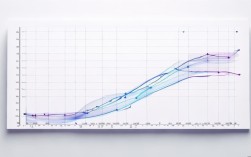在雅思小作文的学术类(Task 1)写作中,饼图(Pie Chart)是常见的可视化数据题型之一,主要考察考生对数据特征的提取、比较及逻辑化描述能力,与柱状图、线形图等不同,饼图的核心在于展示“整体中部分与部分的比例关系”,因此写作时需始终围绕“占比”展开,同时结合数据差异、排序及趋势进行综合分析。

饼图写作的核心逻辑与结构
一篇合格的饼图小作文需遵循“总-分-总”的基本框架,确保逻辑清晰、重点突出,具体可分为以下三个部分:
开篇段:概述图表核心信息
开篇段需用1-2句话概括图表反映的核心内容,包括主题、时间(若有)及整体数据特征,无需涉及具体数据,只需点明“展示了某事物的占比分布”即可。
The pie chart illustrates the proportion of five energy sources (coal, natural gas, nuclear, solar, and wind) used for electricity generation in Country A in 2025.
主体段:分层次描述数据关系
主体段是得分关键,需根据数据特征合理分段,避免简单罗列数据,建议从以下三个维度展开:
- 最大与最小占比:突出数据中的极值,如Coal accounted for the largest share at 45%, while constituted the smallest portion at only 5%.
- 数据分组对比:若存在占比相近或差异明显的类别,可分组描述,可将“超过20%的类别”归为“主要构成”,“10%-20%的类别”归为“次要构成”,剩余为“次要构成”。
- 特殊变化或关联:若饼图涉及时间对比(如两个年份的占比),需说明动态变化,如The proportion of solar energy witnessed a significant increase from 8% in 2025 to 15% in 2025.
结尾段:总结核心趋势或结论
结尾段需呼应开篇,用1句话重申图表最突出的结论,避免引入新数据。Overall, fossil fuels remained the dominant energy sources, though renewable energy showed promising growth.
数据描述的常用句式与技巧
占比表达
- 基础句式:A accounted for X% of B. (A占B的X%)
- 替换表达:A made up X% / constituted X% / comprised X% of B.
- 对比句式:A was twice as large as B (20% vs. 10%). (A的占比是B的两倍)
数据排序与分类
- 升序/降序描述:The energy sources can be ranked in descending order: coal (45%), natural gas (25%), nuclear (15%), solar (10%), and wind (5%).
- 分类描述:The majority of energy sources (over 70%) were non-renewable, while renewable sources accounted for less than 20%.
趋势与变化(若为动态饼图)
- 增加:The percentage of A increased / rose / grew / surged from X% to Y%.
- 减少:A decreased / dropped / fell / declined from X% to Y%.
- 倍数关系:A tripled between 2025 and 2025 (from 5% to 15%).
写作注意事项
- 避免机械罗列数据:需提炼数据特征,而非简单复述“占X%”,与其写Coal was 45%, natural gas 25%...,不如写Fossil fuels dominated the energy mix, with coal and natural gas together accounting for 70% of the total.
- 合理使用“占位词”:对于未知或无需精确的数据,可用approximately / around / about / roughly修饰,如The proportion of nuclear energy was roughly 15%.
- 单位与一致性:确保百分比总和为100%(若题目给出总和),避免出现逻辑矛盾。
高频话题与数据特征示例
| 话题类别 | 常见数据特征 | 示例数据 |
|---|---|---|
| 能源来源 | 化石燃料占主导,可再生能源占比上升 | 煤炭45%、石油25%、天然气20%、太阳能7%、风能3% |
| 教育专业选择 | 商科、STEM类占比高,人文类占比较低 | 商科30%、工程25%、医学15、文科10%、其他20% |
| 家庭支出结构 | 住房、食品、交通为主要支出,娱乐占比最小 | 住房35%、食品25%、交通20%、娱乐10%、其他10% |
相关问答FAQs
Q1: 饼图数据较多(如超过6类)时,如何避免内容冗长?
A: 当饼图类别过多时,需进行“合并同类项”或“重点突出”,具体方法为:将占比低于5%的小类别合并为“Others”并描述其总和(如Others, comprising three minor categories, accounted for less than 10%);重点描述占比前3-5位的类别,其余类别简要提及即可,可按“主要类别(>20%)—次要类别(10%-20%)—其他类别(<10%)”的逻辑分层,避免逐条罗列。
Q2: 如何在饼图中描述“占比相同”的数据?
A: 当两个或多个类别占比相同时,需使用“并列+对比”结构。The proportions of natural gas and nuclear energy were identical, both at 25%. 或 Natural gas and nuclear energy each constituted a quarter of the total, making them the second and third largest sources, respectively. 若涉及多个相同占比,可进一步说明其排序关系,如Three categories—solar, wind, and hydro—each accounted for 10%, ranking as the smallest energy sources.











